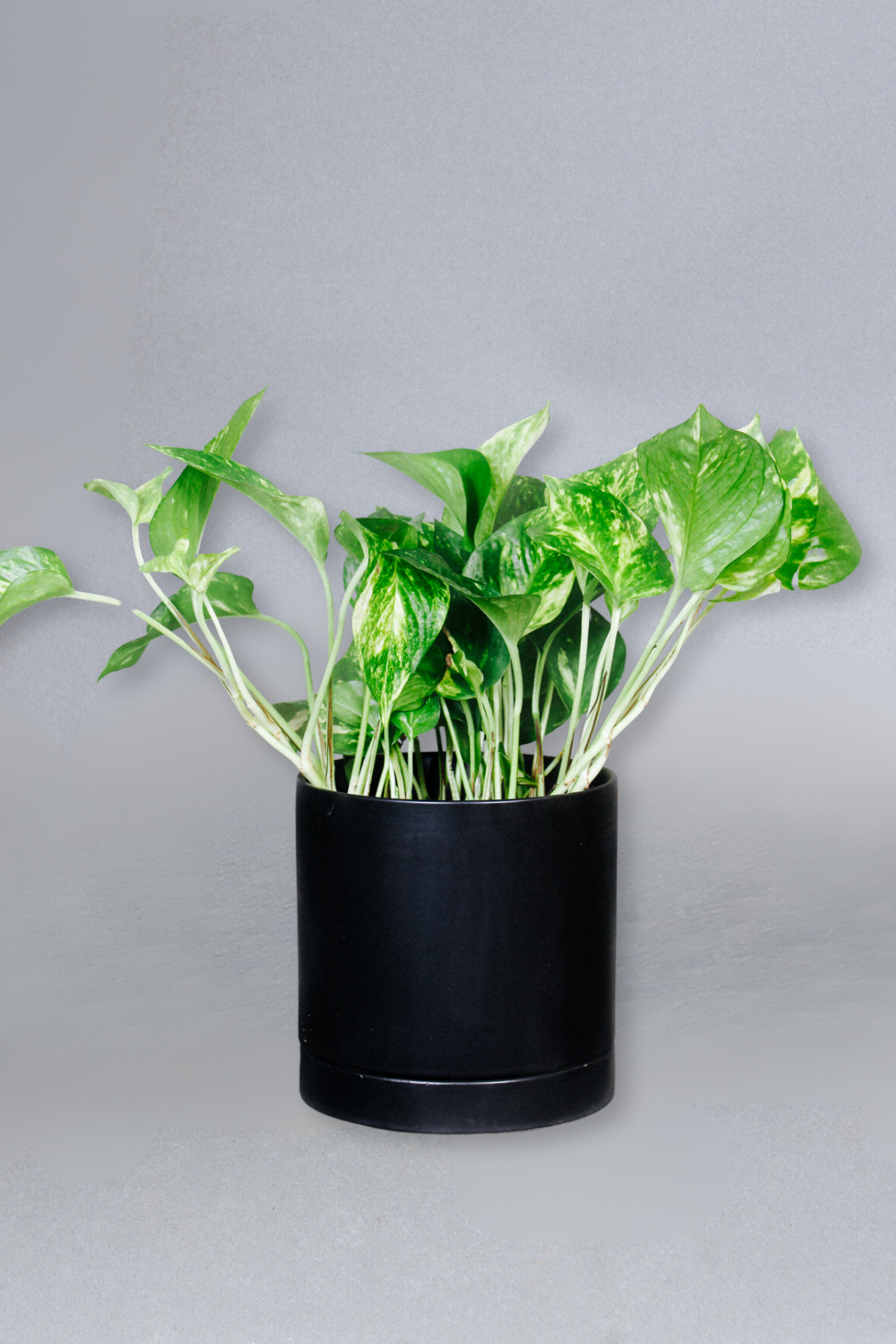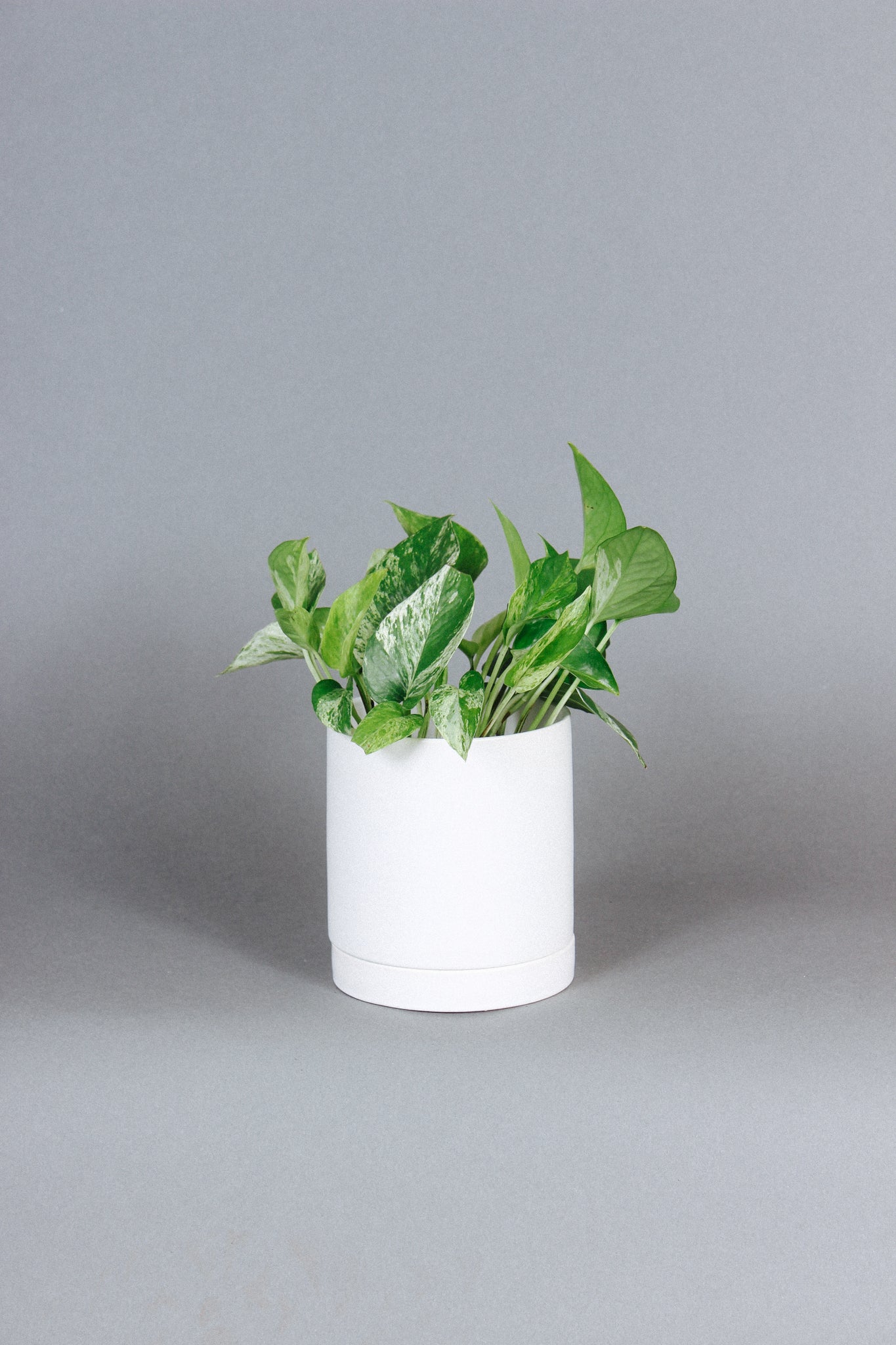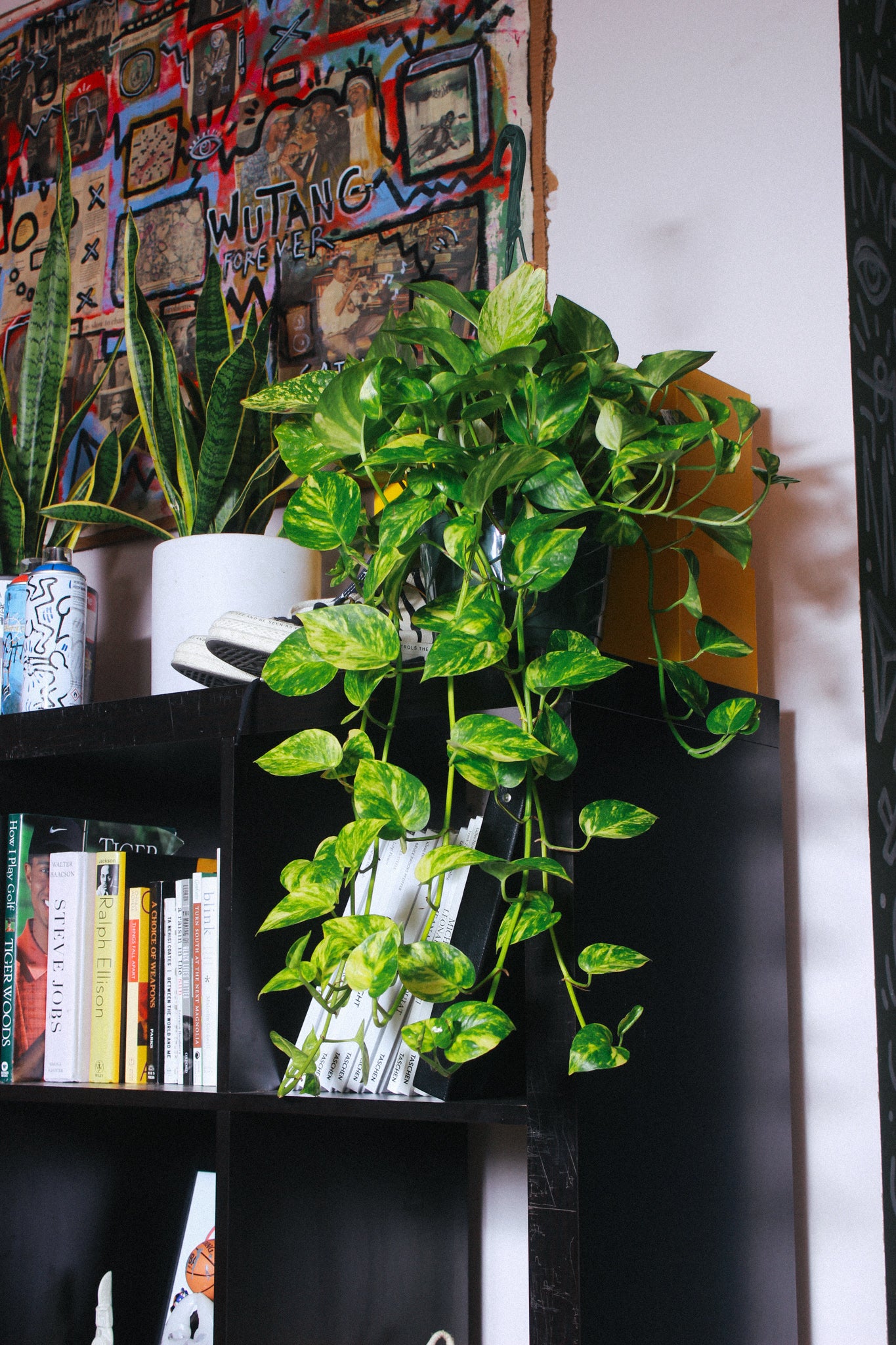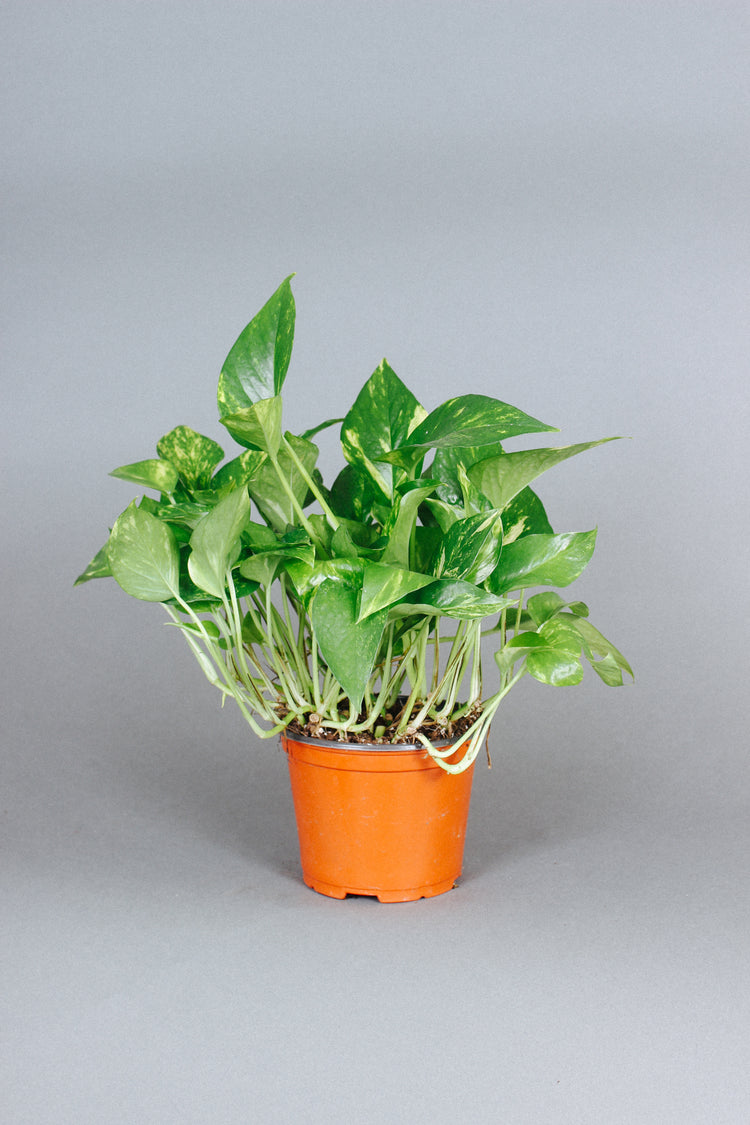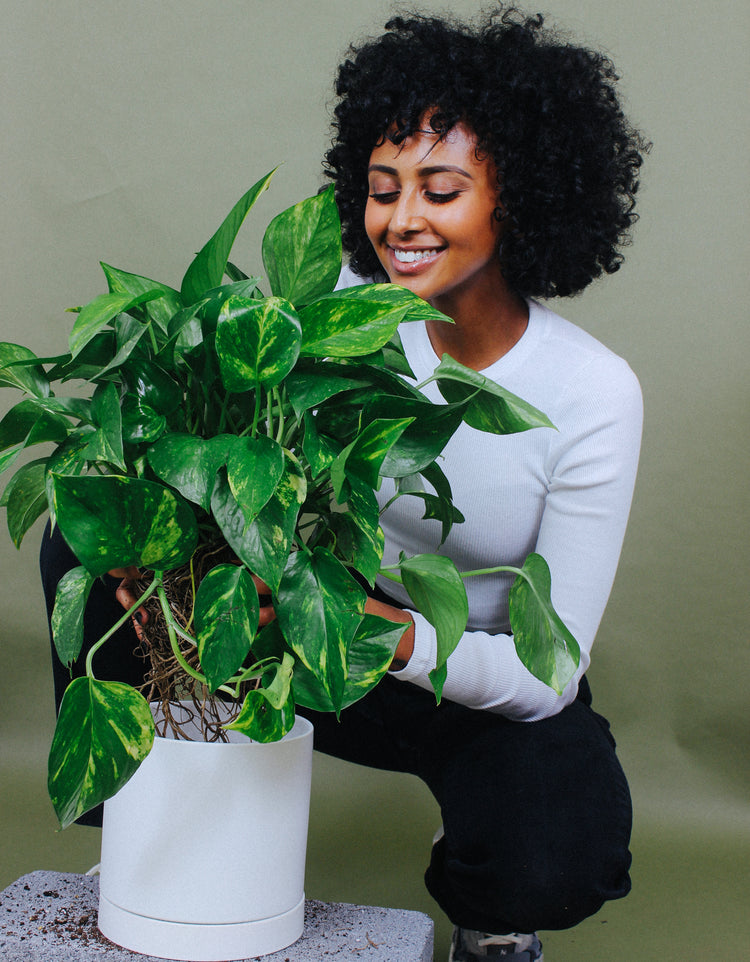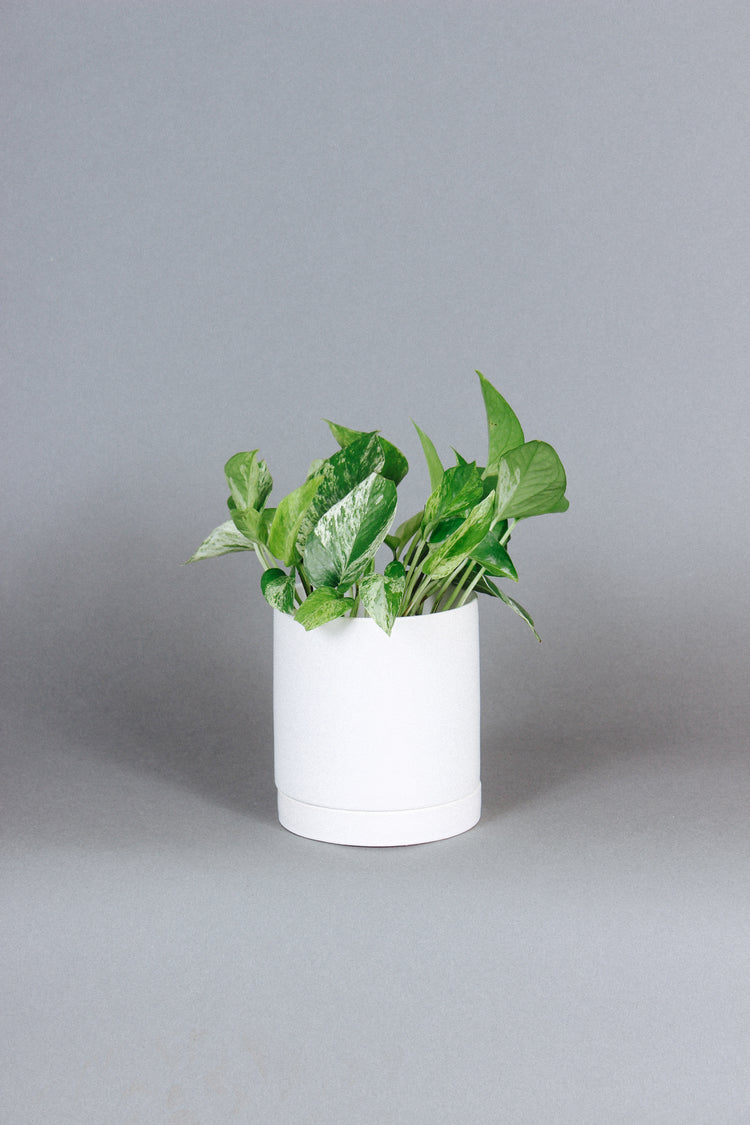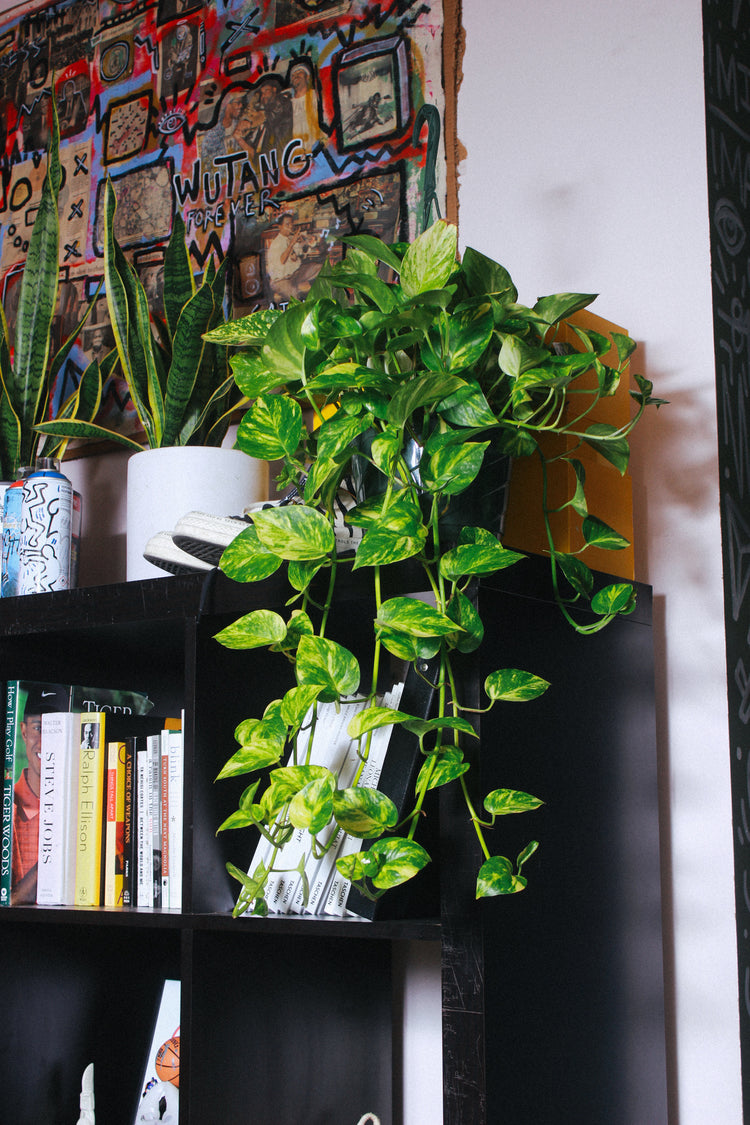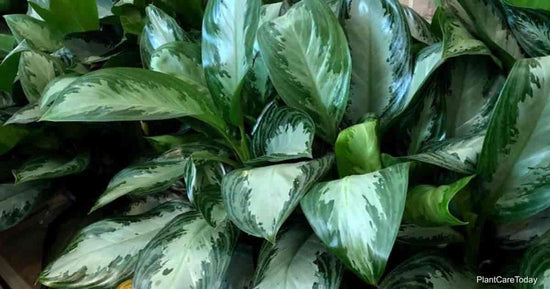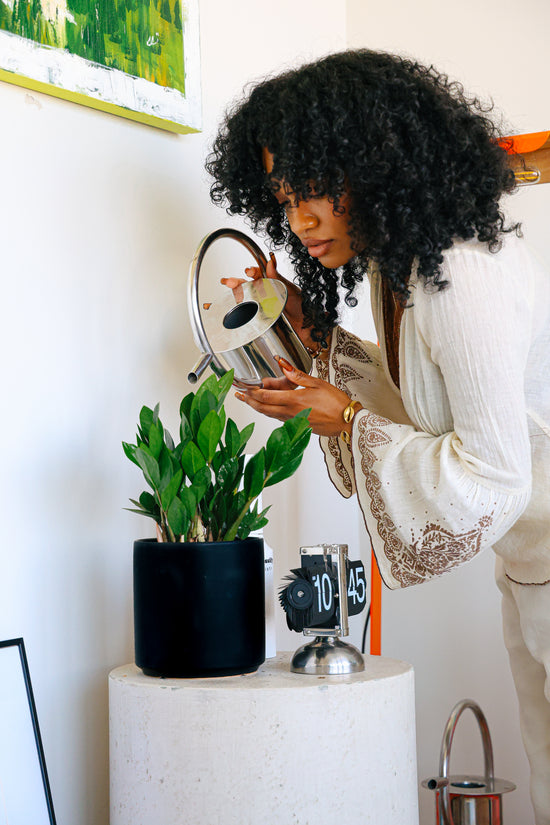CHARACTERISTICS
Pothos varieties grow in long vines with stems that offer plenty of green, heart-shaped leaves. Their vines will trail, hang, or climb with time and little effort. Depending on which variety you’re caring for, you will see leaves ranging from dark emerald to neon, and more in between. Native to areas of Southeast Asia and nearby islands where they’re considered invasive, the Pothos will flourish in any space that can replicate a tropical indoor environment.
LIGHT
All Pothos varieties are adaptable to a range of light levels, including low lighting. However, bright and indirect light is preferred. Some varieties of Pothos will have slightly different light needs. Find your Pothos below!
GOLDEN POTHOS
Golden pothos show golden-yellow leaf variegations amongst a light-to-dark base green. To maintain these variegations and encourage the same in new growth, bright and indirect light is best. In low lighting, these variegations will fade or show one uniform color.
JADE POTHOS
Jade Pothos leaves are a uniform, deep green and will flourish in any level of indirect light. They will grow fastest under brighter light, though!
NEON POTHOS
Neon Pothos leaves are bright neon and will maintain their color under any level of indirect light. This incredibly easy-going variety is especially great for offices and indoor spaces with little natural light. Neon Pothos will grow fastest under brighter light, though!
MARBLE POTHOS
Marble Pothos show cream-colored speckles amongst a light-to-dark base green. To maintain this marbling variegation and encourage the same in new growth, bright and indirect light is best. In low lighting, these variegations will fade or show one uniform color.
WATER
Water well when the top 2-3 inches of soil are dry. They appreciate consistent waterings, with enough time for the soil to dry out about halfway in between.
It’s best to use with room temperature, non-tap water. Water well enough that it flows out of the drainage hole.
AIR
Create a tropical environment by maintaining warm temperatures and offering your Pothos an extra boost of humidity. It should be kept away from drafts and cold temperatures.
Here are some easy ways to regularly offer humidity for your Pothos:
- Adding a humidifier nearby
- Creating a pebble tray that lives underneath the pot
- Misting the leaves 2-4x per week with non-tap, lukewarm water
- Placement in a bathroom or kitchen if lighting is suitable
PLACEMENT
The Pothos is believed to represent perseverance, abundant energy, and is even known as a money plant in some cultures. Their ability to bounce back despite care mistakes can serve as a daily reminder of your own perseverant spirit.
While ensuring its environmental needs are met, consider placing it intentionally in your home using this symbolism. According to ancient Feng Shui, the abundant energy of the Pothos can be used to attract financial abundance. Place the Pothos in the far left or southeast corner of your home. You can also set it in your office or workspace.
Pothos are also one of few plants that will continue to produce oxygen overnight, making it a great bedroom plant for better sleep + breathing.
POTTING & SOIL
We recommend a ceramic planter with a drainage hole to provide moisture balance for the Pothos. Ideal soil is a well-draining mix with aerating and moisture-retaining amendments such as perlite and coco coir.
When repotting, keep it in a planter of the same size or no more than 2 inches larger. While you can refresh the soil every growing season for new nutrients, Pothos can go 1-2 years without needing to be potted into a larger pot.
SEASONAL CARE
Reduce the watering frequency through Fall and Winter while the plant rests and the soil dries slower. If they’re on a windowsill, they may need to be moved a few feet away to avoid cold drafts. Be sure to maintain humidity throughout the cold months as well!
At the start of Spring, gradually increase your watering frequency again and fertilize every 2-3 weeks. Do not fertilize for at least 6 weeks after it has been repotted.
PRUNING & PROPAGATION
Fast-growing Pothos can be propagated anytime throughout the year to manage size, encourage growth, or use for propagations. Damaged, dead, and diseased parts of the plant should always be pruned and discarded.
Always make a cut using clean scissors directly above a leaf node (small brown bumps that the new growth will come from) A suitable stem for cutting should be well-developed and healthy, at least 4+ inches long, with at least 2 healthy leaves.
Pro Tip: Sprinkle cinnamon on exposed cuts to prevent infection and read more on propagating here!
COMMON ISSUES
Luckily, the Pothos is super forgiving and a great communicator. If you’re concerned about changes you’re seeing, some common issues can be found below:
BROWN LEAVES
Brown leaves or spots on a Pothos can be a result of underwatering, lack of humidity, lighting that is too harsh, and/or root rot. To understand the cause, start by sticking your finger into the soil to assess the moisture. Very dry soil will point to extreme thirst while waterlogged soil will point to root rot.
BROWN + DRY EDGES OR TIPS
Brown leaf tips or edges are a sign of dry air or soil. Give your Pothos a regular boost of extra humidity and be sure to water once the top half of the soil has dried.
FADING LEAF COLOR
Pothos with variegated leaf patterns will lose their color when exposed to low light, while shedding old growth, a lack of nutrients, and improper water routines.
YELLOW LEAVES
Yellow leaves on a Pothos are most commonly from overwatering or an inconsistent watering schedule. Yellowing is also common for old leaves, poor drainage, low light levels, or shock from temperature change and transport.
LIMP LEAVES
Pothos leaves will go limp in response to thirst, cold temperatures, lack of nutrients, or from being root-bound. If your Pothos is repeatedly wilting, check for root rot, pest, and fungus infestations, too.
PRO TIPS
- New growth comes from the very end of a vine, which is encouraged sunlight. Once the vines on your Pothos plant have grown long, hang them or train them to climb so their full length gets even access to the light!
- Pothos should be rotated regularly to encourage even growth around the pot. Any vine can be pruned just above a node to encourage full growth in a new direction.
- Your Pothos is a great communicator! The leaves will go limp when they need something and perk right back up once they’re happy.
-------
We love to see your new growth! Tag us at @groun.ded!



